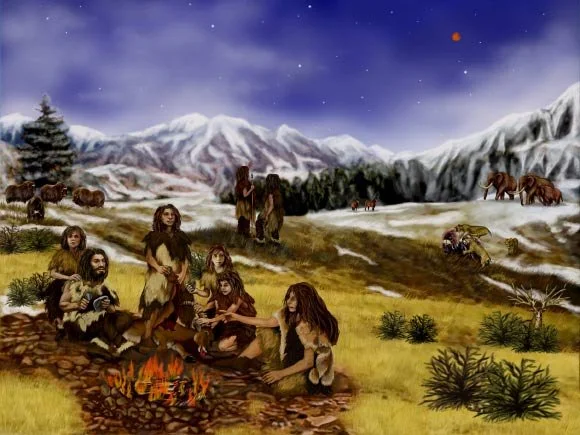The southern European temperature substantially dropped around 1.1 million years ago, which led to the extinction of archaic people on the continent, according to new paleoclimate research.
Margari et al. discovered the occurrence of previously unknown extreme glacial conditions around 1.1 million years ago in Europe.
The glacial cooling of Europe around 1.1 million years ago increased temperatures beyond what prehistoric people could endure, which resulted in the eradication of human communities.
Early human ancestors may have traveled from southwest Asia to Europe as early as 1.4 million years ago, according to the oldest human bones in Europe that have previously been discovered in Iberia.
Generally speaking, the weather at that time would have been warm and rainy, with brief moments of mild cold.
The prevailing assumption up until now has been that once people arrived, they were able to endure numerous climate cycles and adjust to more difficult environmental conditions after 900,000 years ago.
Professor Chronis Tzedakis of University College London stated that "our discovery of an extreme glacial cooling event around 1.1 million years ago challenges the idea of continuous early human occupation of Europe."
Professor Tzedakis and his team evaluated the pollen content in a deep-sea sediment core that was obtained from off the coast of Portugal as well as the chemical makeup of marine microorganisms in the study.
This made it clear that there had been sudden climate changes, which had led to an intense glacial cooling, which had resulted in ocean surface temperatures off Lisbon falling below 6 degrees Celsius and semi-deserts growing on the nearby land.
"To our surprise, we found that this cooling at 1.1 million years ago was comparable to some of the most severe events of recent ice ages," stated Dr. Vasiliki Margari of University College London.
"A cooling of this magnitude would have put small hunter-gatherer bands under considerable stress, especially since early humans may have lacked adaptations like sufficient fat insulation and also the ability to make fire, effective clothing, or shelters," said Professor Nick Ashton of the British Museum.
The authors used their supercomputer Aleph to simulate a climate to mimic the harsh conditions during this time in order to analyze the impact of climate on early human populations.
The results of the simulation were combined with the fossil and archaeological evidence of early human settlement in southwest Eurasia to create a human habitat model, which forecasts how conducive the environment was to early human occupation.
Professor Axel Timmermann, head of the IBS Center for environment Physics at Pusan National University, stated that the findings "showed that 1.1 million years ago climate around the Mediterranean became too hostile for archaic humans."
The results of the human habitat model and the paleoclimate information put together show that southern Europe, including Iberia, was depopulated during the Early Pleistocene.
The likelihood of a protracted pause in European habitation is increased by the apparent absence of stone tools and human remains over the ensuing 200,000 years.
Professor Chris Stringer, a researcher at the Natural History Museum in London, said that in this scenario, more hardy humans with evolutionary or behavioral changes that allowed survival in the harshening glacial conditions may have recolonized Europe around 900,000 years ago.







